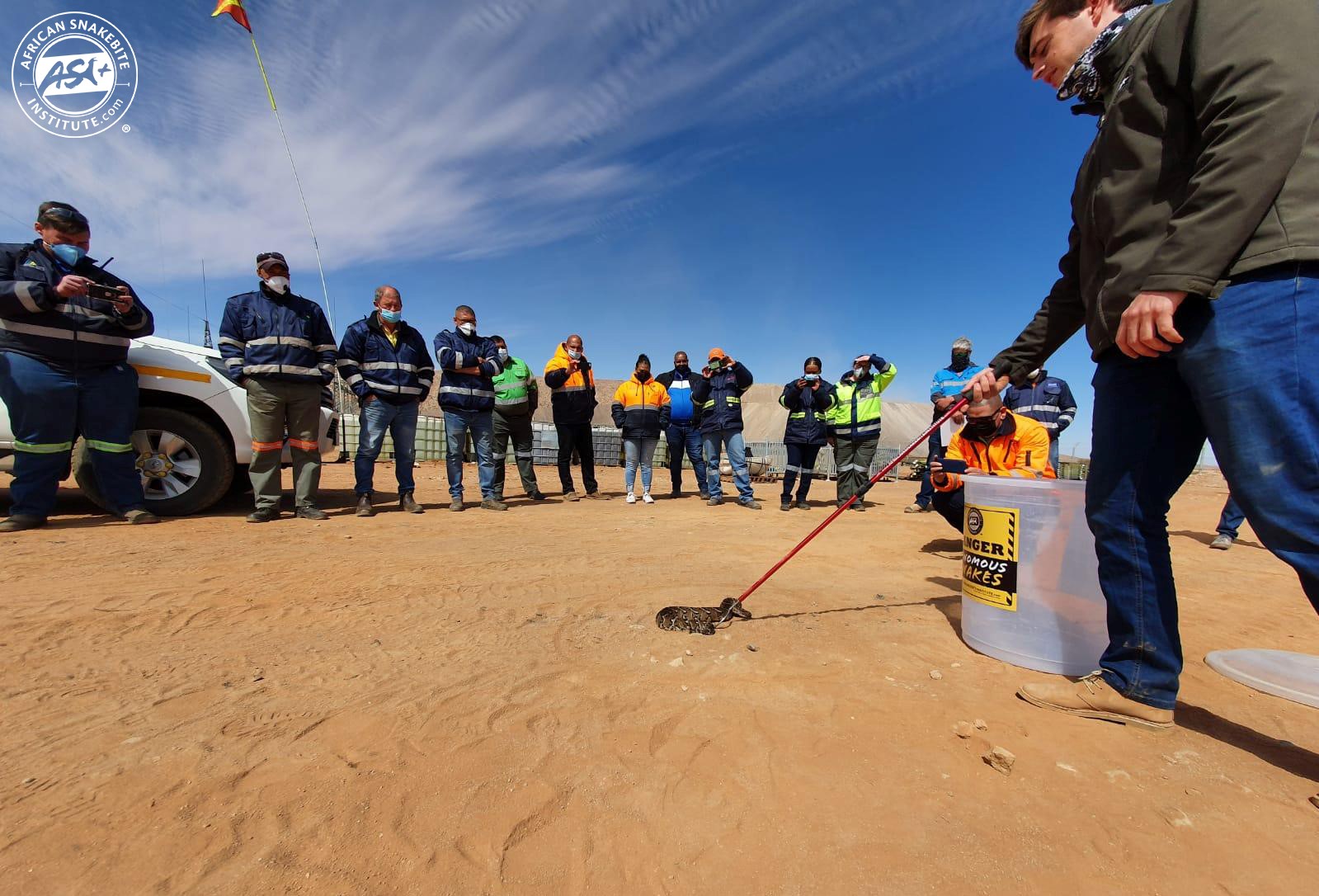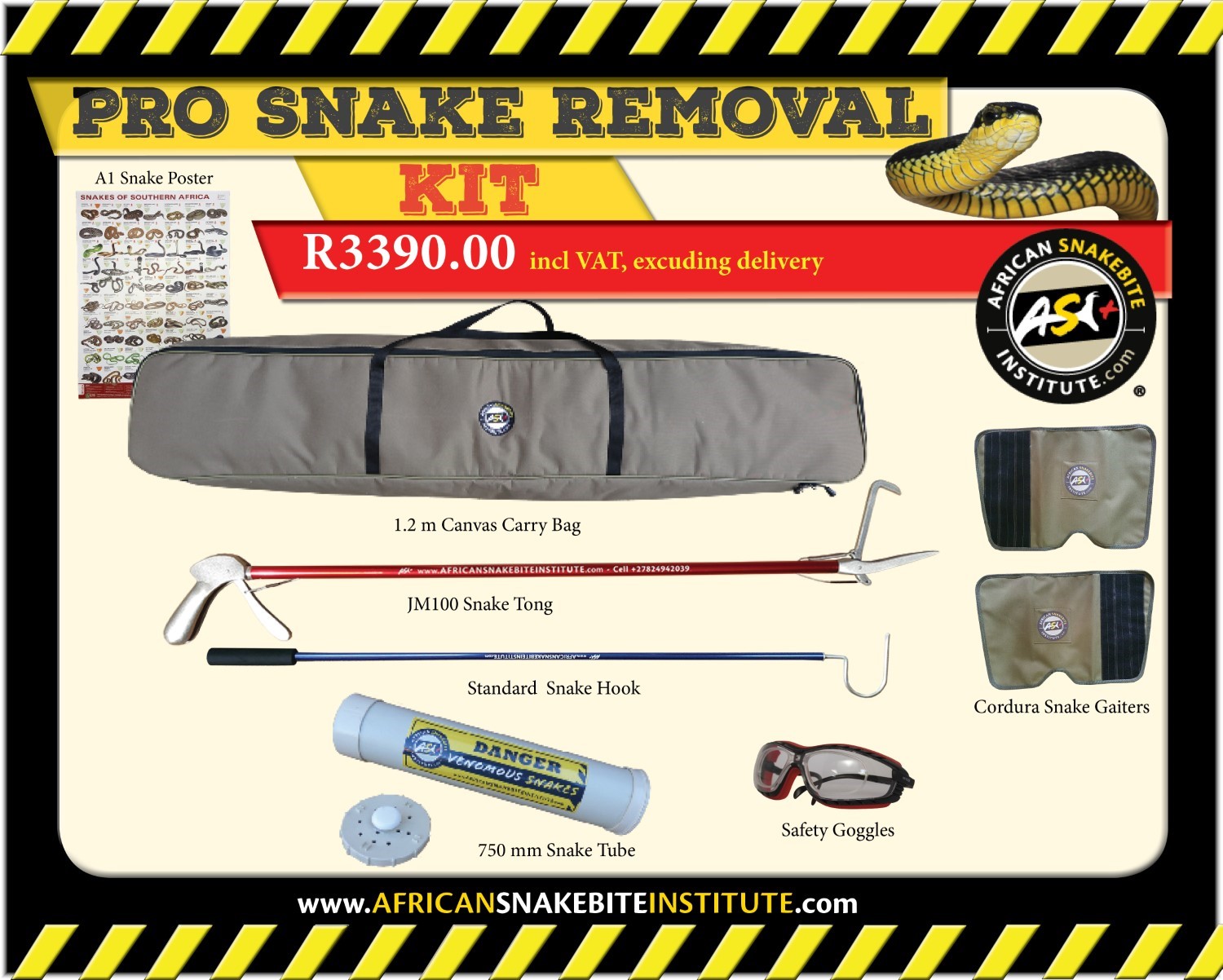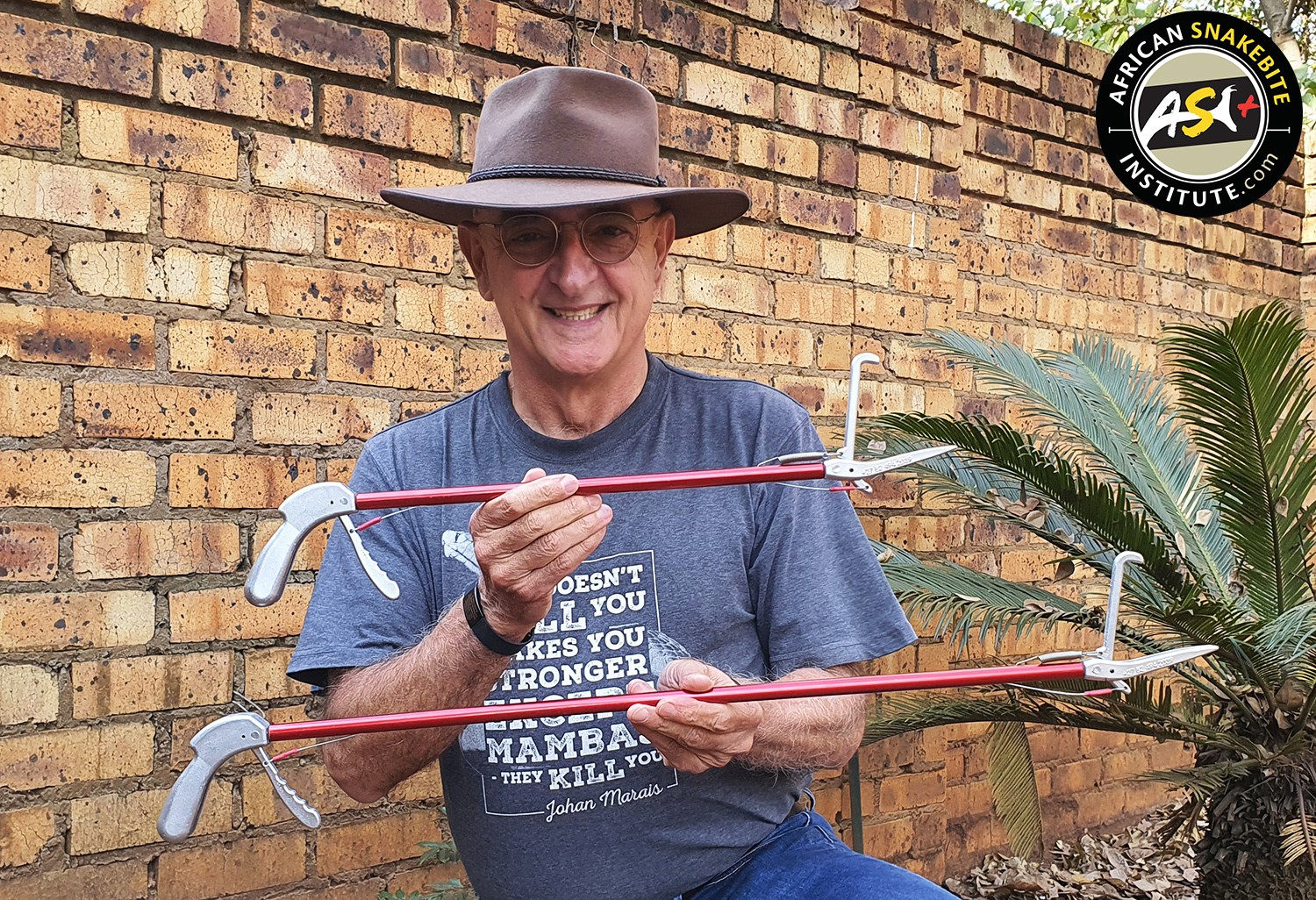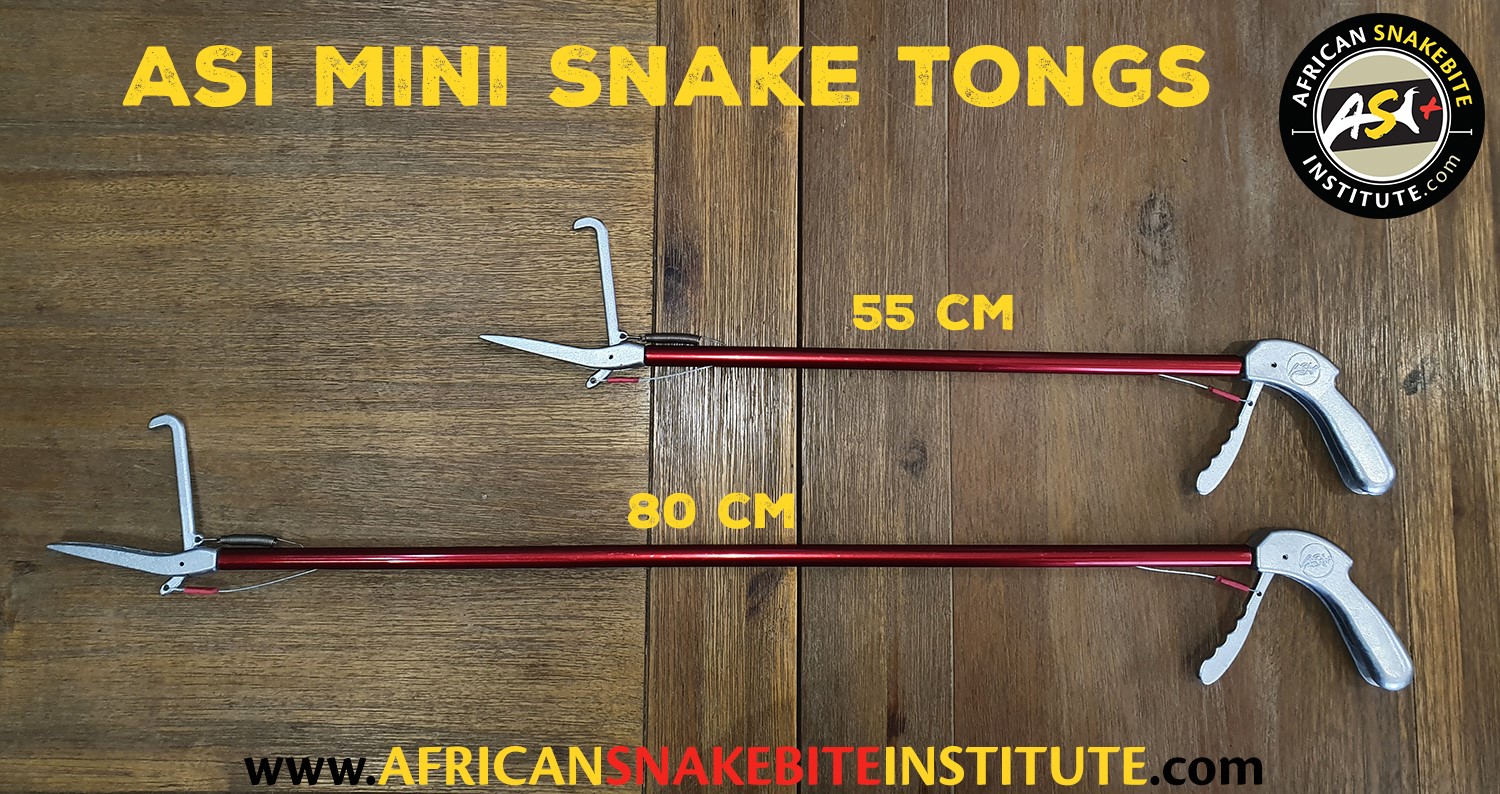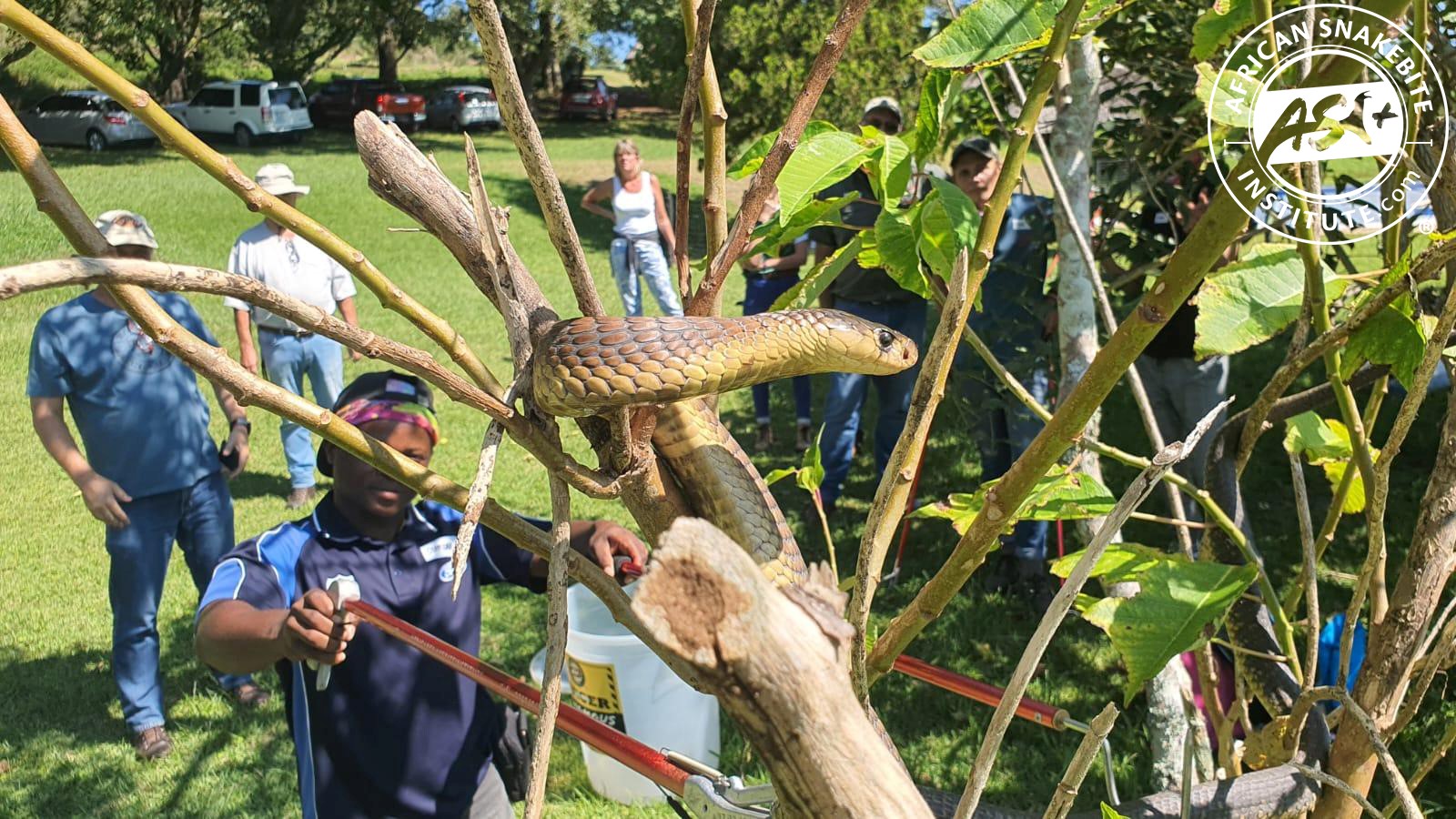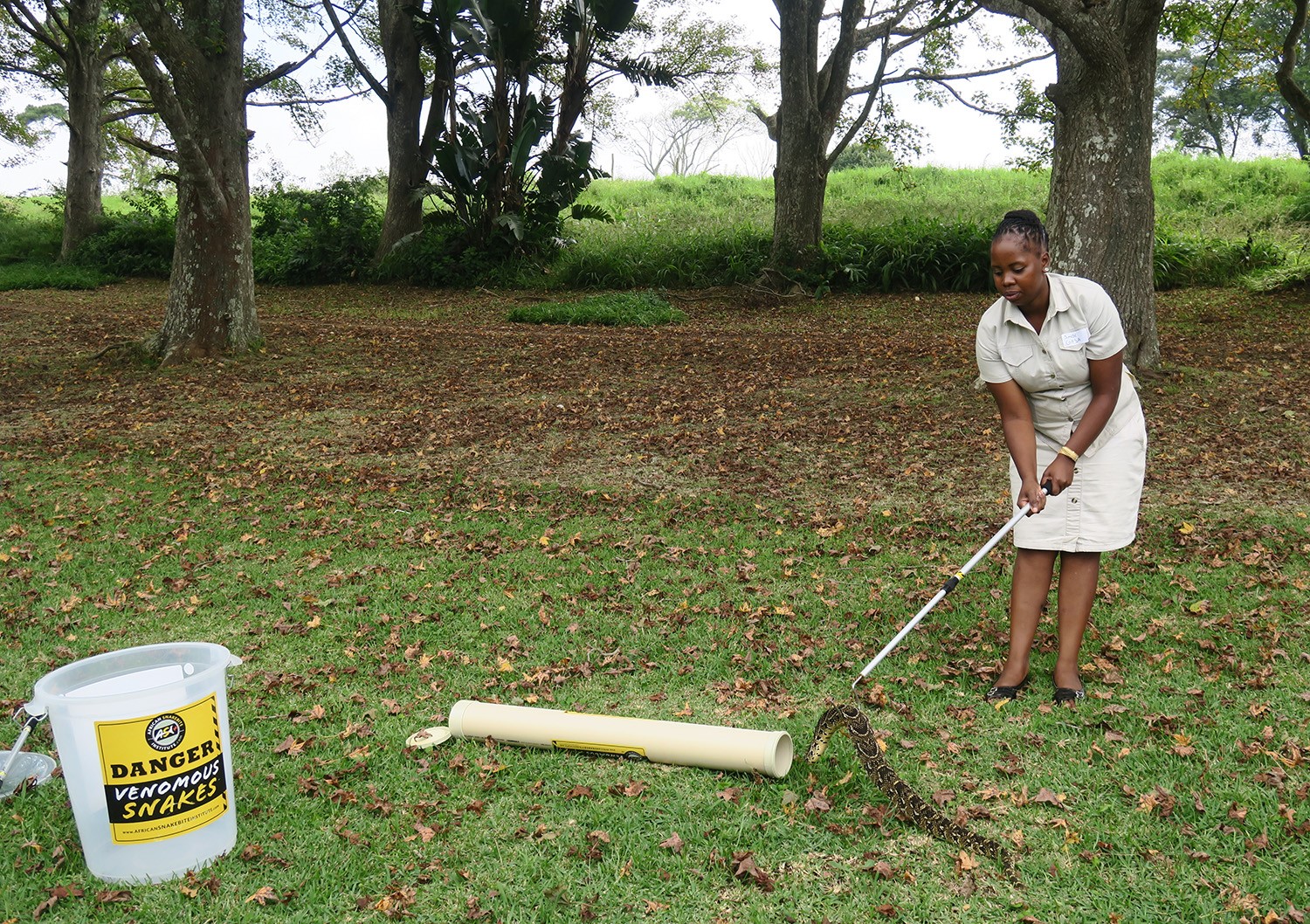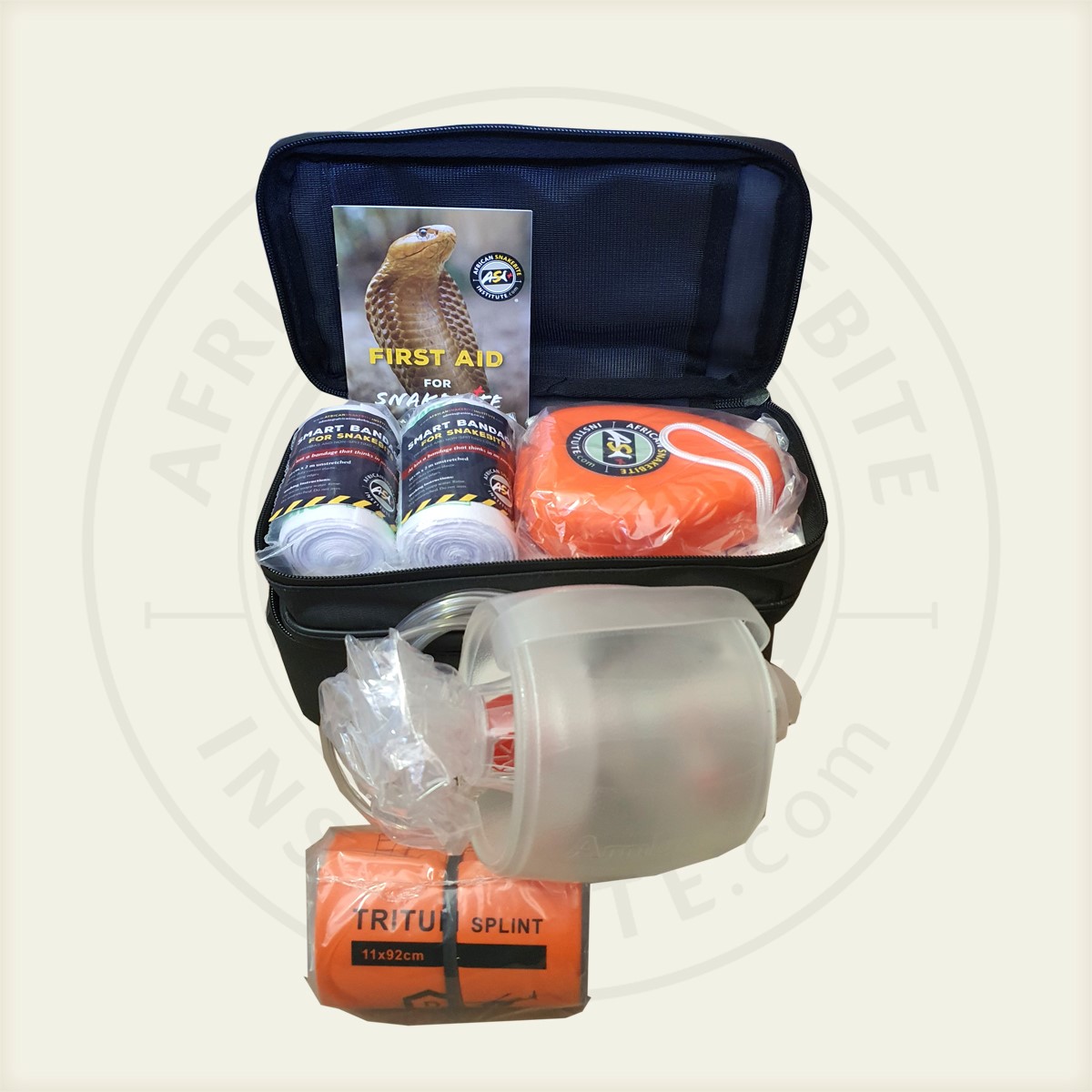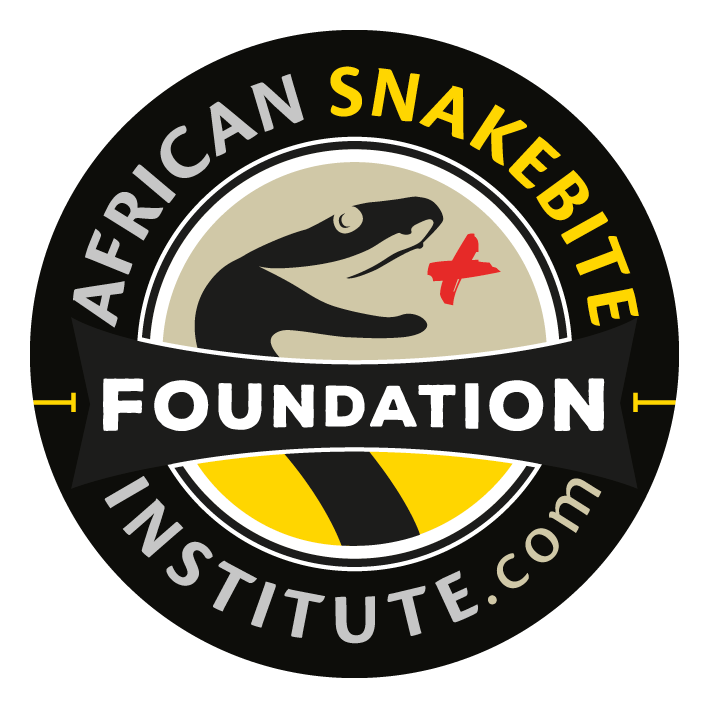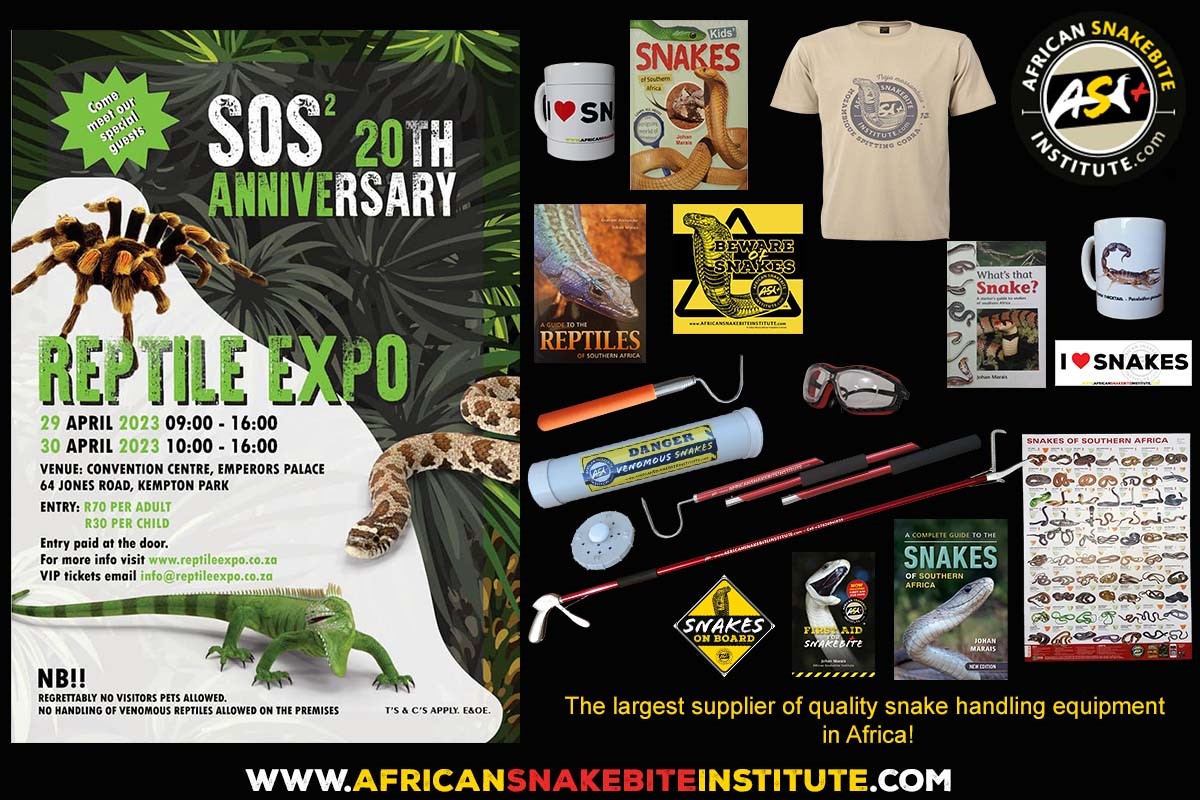We have over 4,000 delegates a year attend our snake awareness, first aid for snakebite and venomous snake handling courses. These courses are offered to corporate clients throughout Africa whose staff need to deal with snake encounters on site. They include the likes of mines, solar and wind farms, game lodges, bush clearing teams, power plants, construction companies, etc.
We also offer the courses to members of the public at various venues around South Africa – ideal for people who want to learn more about snakes, how to remove them from their properties or how to deal with snake encounters, and first aid for snakebite.
Our snake handling protocols have been developed over several years, and we make sure to teach the safest snake removal techniques and protocols to all our delegates. There is no compromise when it comes to snake safety!
We have also developed and manufacture a large range of quality snake handling equipment, specifically suited to African snakes, and proudly offer the largest selection of quality snake handling equipment in Africa!
We discuss catch and release logistics in our practical courses, and we have listed a few important guidelines below:



